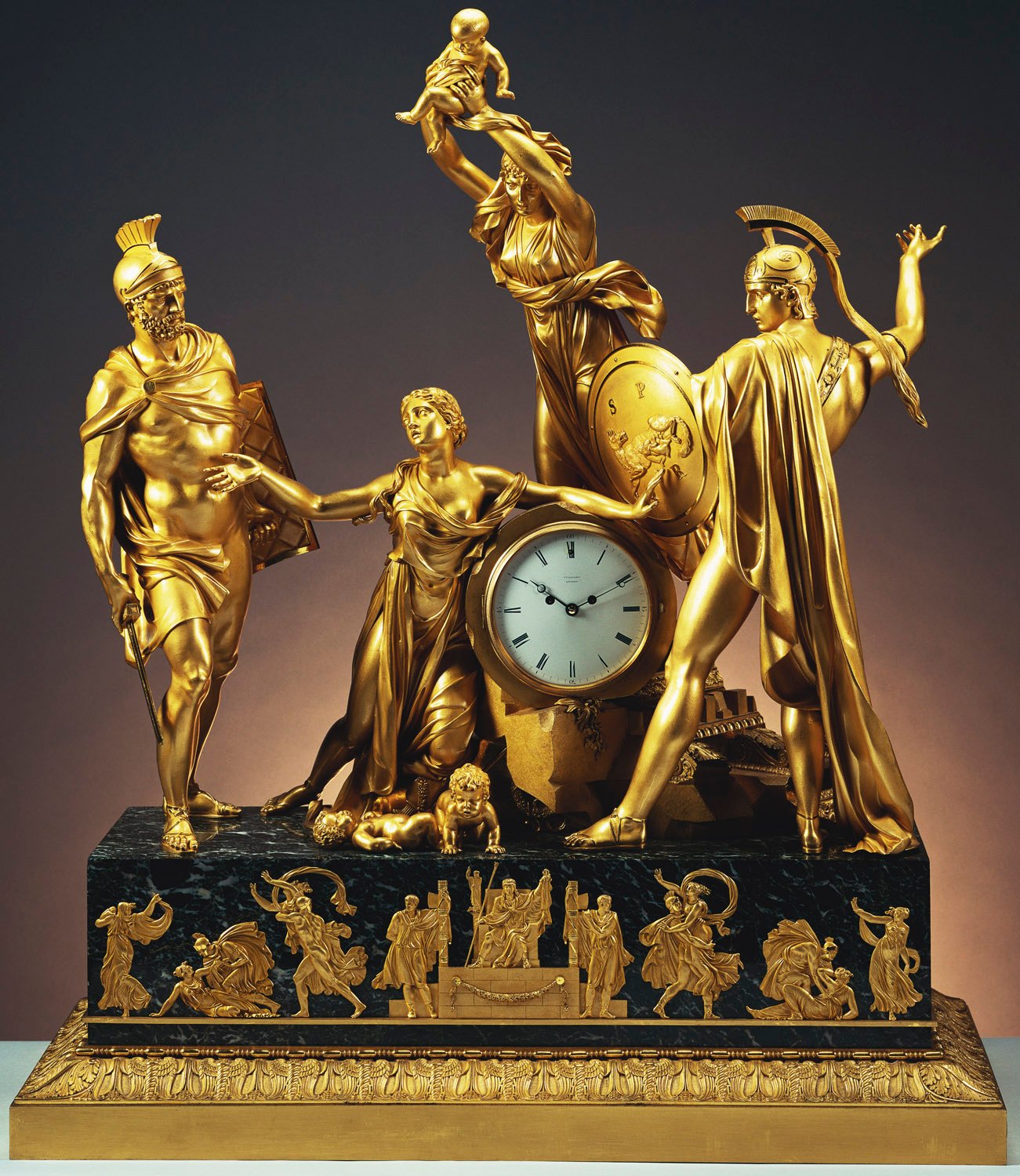
Keeping Time: Clocks in the Royal Collection
Extraordinary timepieces in the Royal Collection, 1630-1830
Queen Charlotte's Lever Watch and Pedestal
1770RCIN 63759
George III's wife, Queen Charlotte (1744-1818), was said to keep ‘twenty-five watches, all highly adorn’d with jewels’ by her bed at Buckingham House, and this watch may have been added to them when it was acquired by him in 1770. Its maker, Thomas Mudge (1715-1794), referred to it as the 'Queen's watch', claiming it was 'the most perfect watch that can be worn in the pocket, that was ever made'.
Mudge's pride in his work was not misplaced. This unique piece has been described as 'perhaps the most historically important watch in the world', since it incorporates the earliest known example of a lever escapement – which ensures the movement of the clock's hands at a steady rate. With the exception of the balance spring, Mudge's invention is the greatest single improvement that has ever been applied to watches. As such, this watch is the forerunner of almost all modern wrist and pocket watches. In addition, it was the first pocket watch to include an automatic device which compensated for changes in temperature.




